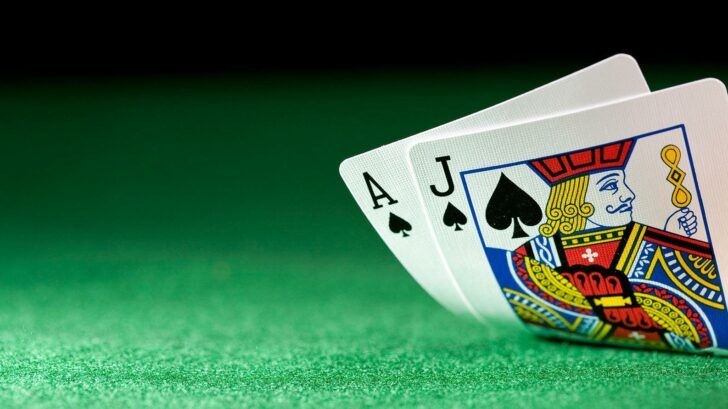How to Become an Expert in BlackjackBasic Strategy in 5 Minutes

Blackjack basic strategy is a lot simpler than most people realize. Here are five tips for getting in down cold in just a few minutes.
The advanced aspects of blackjack strategy can be complicated, requiring dense mathematical modeling and hours of practical practice. You won’t find a blackjack pro anywhere who doesn’t use a card counting system, and most use other advantage play techniques as well—such as shuffle tracking or hole card reading.
But the nitty gritty of blackjack begins and ends with basic strategy—knowing when to hit, stand, split, and double down. And you can learn these basic principles in just a few minutes, putting you well on your way to blackjack mastery.
#1: Never hit a hard 17 or higher
The object of blackjack is to beat the dealer, not to not bust. However, that doesn’t mean that you should play so aggressively as to put yourself at unnecessary risk of going over. If you hold a hard 17,18,19, or 20, STAND!
Your bust-out rate when hitting in any of these situations ranges from 69 percent to 92 percent, so you’re best option is to stay put and hope for the best.
If you hold a hard 16 (one of the worst hands in blackjack), your bust-out rate is still 62 percent, so you need to weigh it against the dealer’s upcard. If the dealer shows an upcard of 5,6, or 7, his chances of busting are high enough that you can consider staying put.
Be sure to get a blackjack basic strategy chart, which will tell you the mathematical probability of success when making any move in any scenario.
#2: Always hit a soft 17
When you hold a soft 17, by contrast—meaning that you hold a 6 and an Ace—you should hit in almost any situation. A 17 itself doesn’t give you a strong chance of winning, and because the Ace will revert to 1 in the event that you go over 21, your chances of busting are almost non-existent.
Many casinos now have the “Soft 17 rule” by which the dealer is required to hit in this situation. Mathematical analysis shows that the dealer will win more hands this way than if he stands, and the house edge increases by .20 percent. Case in point.
#3: Double down with a hard 10 or 11
“Doubling down” means doubling the size of your bet while agreeing to be dealt only one additional card. You should do it when your chances of winning look high, and when you only need on more card. Never double on a soft hand, because you’ll probably need more than one card to get close to 21.
The best situations for doubling are when you hold a hard 10 or 11, both hands which have a bust-out rate of zero and give you a high chance of landing a 20 or 21.
It can be advantageous to double a hard 9, depending on the dealer’s upcard. If the dealer shows a low card (2,3,4,5, or 6) his chances of busting are high, so you should take advantage of the situation and double.
#4: Don’t take insurance
Insuring against dealer blackjack is a seduction that many blackjack strategy beginners fall prey to. When the dealer shows an Ace upcard the player is given the opportunity to insure against a blackjack.
This means putting up half of the initial wager as a side bet. If the dealer does land a blackjack, they player loses his initial wager but is paid 2-1 on the side bet, negating his loss.
This looks like a good deal, but is actually a waste of money. In the majority of such situations, the dealer won’t land a blackjack, and the player’s side bet is money wasted. In the long-run you’re better off taking your chances the old-fashioned way.
#5: Shop around for the best tables
Any blackjack table in North America, Europe, or Asia will have the rules clearly stated. It’s important that you know what these rules mean so that you can stake out the table with the lowest house edge. As a general rule, tables with lower minimums have higher house edges.
Look for tables which pay 3:2 on player blackjack (6:5 is the biggest swindle in casino gambling today), allow early surrender, re-splitting of Aces, doubling down on any hand, double down after splitting, and require the dealer to stand on a soft 17. Each of these rules puts a bit more money into the player’s pocket.
At the Bellagio, which has been crowned “the best place to play blackjack in Las Vegas,” each of these player-friendly rules are present at the $15 dollar minimum, six-deck table. The end result is a house edge of only .28 percent, roughly half of what is considered the “standard” blackjack house edge.
Conclusion
At a certain point blackjack success relies on the ability to use a card counting system. And you’ll get there, but first you need to get basic blackjack strategy down cold. Following each of the steps listed above will provide a solid foundation.
In addition, get a blackjack basic strategy chart and memorize it before you start playing for real money. Once you have a taste of success at the casino you can move on to bigger and better things.




